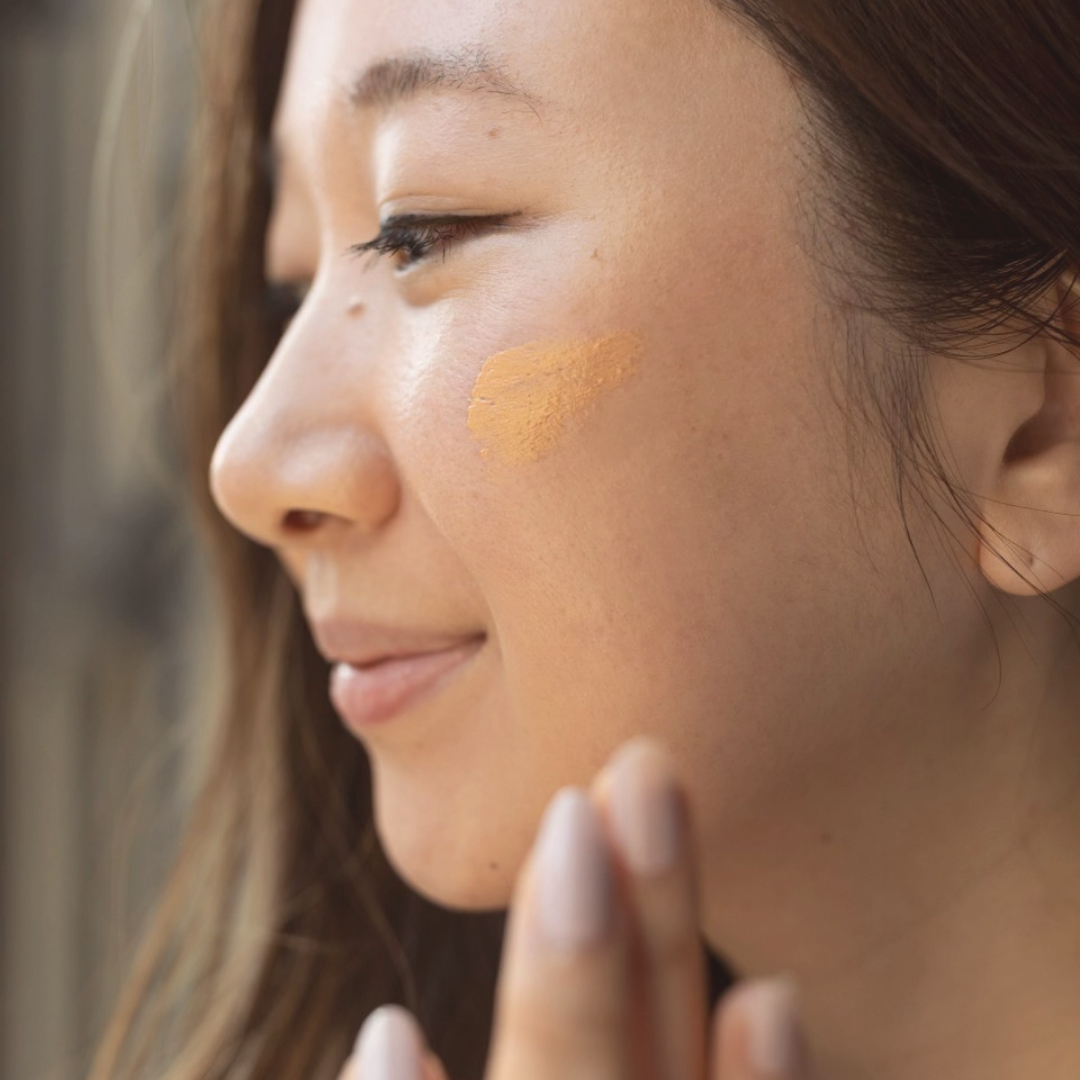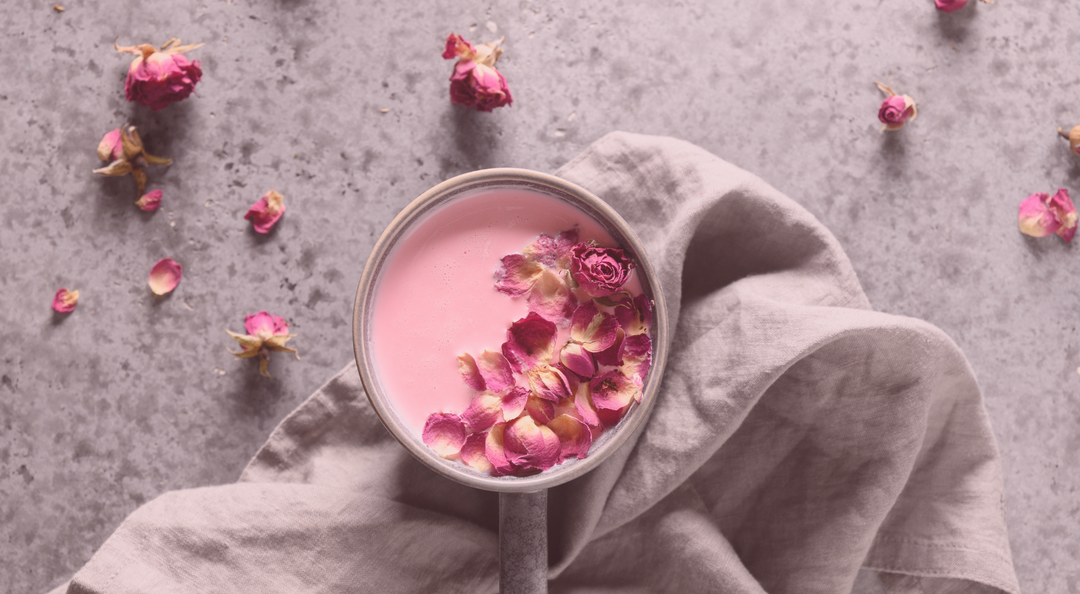From sake baths to green tea facials, the far East has long been a source of inspiration for the wellness and beauty world. And nothing has made holistic beauty quite as popular as K-beauty!
Here we’ll take a closer look at Korean beauty and its herbal roots. Then we’ll hear from a K-Wellness expert on how you can use Korean trends to enhance your self-care routine!
 Intriguing Trends with Traditional Roots
Intriguing Trends with Traditional Roots
Korean beauty first hit the Western scene with BB creams and cut-out face masks, but the world of K-beauty goes much deeper.
Beyond simply slathering unique ingredients on your face and decolletage, K-beauty is rooted in Traditional Korean Medicine (TKM) and holistic mind-body-spirit practices.
Think of TKM as the cousin to Traditional Chinese Medicine (TCM). TCM evolved over thousands of years while neighboring Korea developed its own holistic wellness practices based on its local natural resources and cultural practices. This unique style of traditional herbal medicine became known as hanbang and is still used throughout the world today.
K-Beauty and Herbal Medicine: Beauty from the Inside Out
Like Traditional Korean Medicine itself, K-Beauty focuses on using the body’s innate healing potential to encourage healthier skin, a glowing complexion, and a vibrant glow naturally. To do that, we need to restore balance within as well as on the skin’s surface. And that’s where Korean herbalism shines!
In addition to herbal serums, masks, toners, and internal herbs are an essential aspect of K-Beauty. Here are just a few of the transformative herbs you can find in Korean beauty products:
Ginseng
Ginseng is a famous TKM and TCM herb. It acts as an adaptogen and antioxidant, helping the body regulate stress and boost energy. Beauty-wise, ginseng has anti-aging effects that help keep the skin looking bright and youthful. Ginseng is also rich in vitamins A, E, and B12, as well as minerals like calcium, potassium, and magnesium.
Licorice Root
Licorice root is one of the most commonly used Chinese and Korean herbs. Unlike the black and red “licorice” candies, true licorice root is incredibly healing and harmonizing. Its sweet and slightly balanced nature repairs the digestive tract to minimize gut inflammation (and therefore eliminate those pesky breakouts and eczema). Licorice root also naturally eases stress and boosts your immune system for whole-body health and natural beauty.
Angelica, or Radix angelicae, is traditionally it is known as “the woman’s herb” because it helps regulate the menstrual cycle and relieves cramps. It does so by improving circulation - which is exactly why it is also a favorite beauty herb! Better circulation means the skin gets more nutrients and hydration and fewer breakouts and wrinkles.
Let’s Talk K-Beauty with Expert, Grace Yoon
Grace Yoon is an herbalist, AADP certified health practitioner, and the founder of Qi Alchemy - an herbal company that specializes in sourcing high-quality herbs and organic superfoods from South Korea.
We had the opportunity to pick her brain on the power of K-Beauty, TKM, and what every woman should know about Korean wellness. Here’s what we learned!

PM: What first drew you to learn about natural beauty, herbalism, and Korean beauty traditions?
GY: I am Korean-American and was born and raised in Dallas, Texas where I was the token Asian and most people did not know about Korea at all. I had the privilege of living with both of my grandmothers, each of whom played an influential role in my life and shared their Korean heritage with me. My paternal grandmother was a farmer, and my maternal grandmother was an Eastern medicine practitioner. Because my maternal grandmother was an Eastern medicine practitioner, I started receiving acupuncture and taking herbal medicine at a very young age.
By the time I was six, I suffered from chronic health issues and was misdiagnosed several times. It was a stressful time for all of us, as we navigated the frustrating web of the American healthcare system. We initially assumed that America had the best healthcare system but ultimately resorted to non-Western means. We called on my grandmother, an Eastern medicine practitioner, for guidance. Through acupuncture and herbal remedies, my body was able to heal naturally.
PM: In your experience, what makes Korean herbalism/beauty different from other types of natural beauty trends?
GY: Korean herbalism and beauty is based on Confucian philosophy which is placed on the relationship between inner and outer beauty as well as the fermented dishes Koreans eat on a regular basis. Koreans eat a variety of herbs and vegetables called ban chan that are seasoned with sesame oil and/or fermented which is very good for your skin and gut health.
PM: Are there any Korean medicine/beauty products/herbs you couldn’t live without? Which ones and why? Do you have a favorite TKM herb?
GY: Red ginseng and mugwort are a couple of my favorite herbs and Korea is known to produce the highest quality red ginseng in the world. Qi Alchemy’s hero ingredient in the herbal pearls is fermented red ginseng. Red ginseng has many health benefits from anti-inflammatory properties to boosting your immunity and circulation. Mugwort has been foraged in Korea since ancient times and helps with calming nerves, aiding menstrual pains and sleep. It’s also used in a lot of Korean cuisines including rice cakes!
Ginseng has been used for centuries in traditional Eastern medicine for improving overall health. It has been used to improve your immune system, help fight off stress, and lower blood sugar levels. The plant of the ginseng root must grow for four to five years before it's ready to be used and that’s why ginseng is expensive. When the ginseng root is dried—but not processed it’s called white ginseng. When it’s further processed with heat and then dried, it’s referred to as red ginseng (because it changes color during the heating process).
PM: What 2-3 Korean beauty trends should we definitely try?
GY: Face masks obviously help all skin types--I especially like hydration face masks. I also love essence water with ginseng to revitalize my skin and give it deep hydration. I strongly believe multi-step cleansing is one of the most important k-beauty routines that people should practice for healthy, smooth skin.
Embrace the Wisdom of Traditional Korean Medicine and Herbalism with Qi Alchemy Founder, Grace Yoon!
If Traditional Korean Medicine sounds like something you’d love to incorporate into your wellness and beauty routines (and why wouldn’t you?!), you’re in luck! Pink Moon is teaming up with Grace Yoon, an expert in Traditional Korean Medicine and natural beauty, for an introductory course on all things Korean medicine.
Join us on September 17th to meet Grace and learn how you can use the wisdom of Korean medicine and herbalism to embrace better health and natural beauty!





